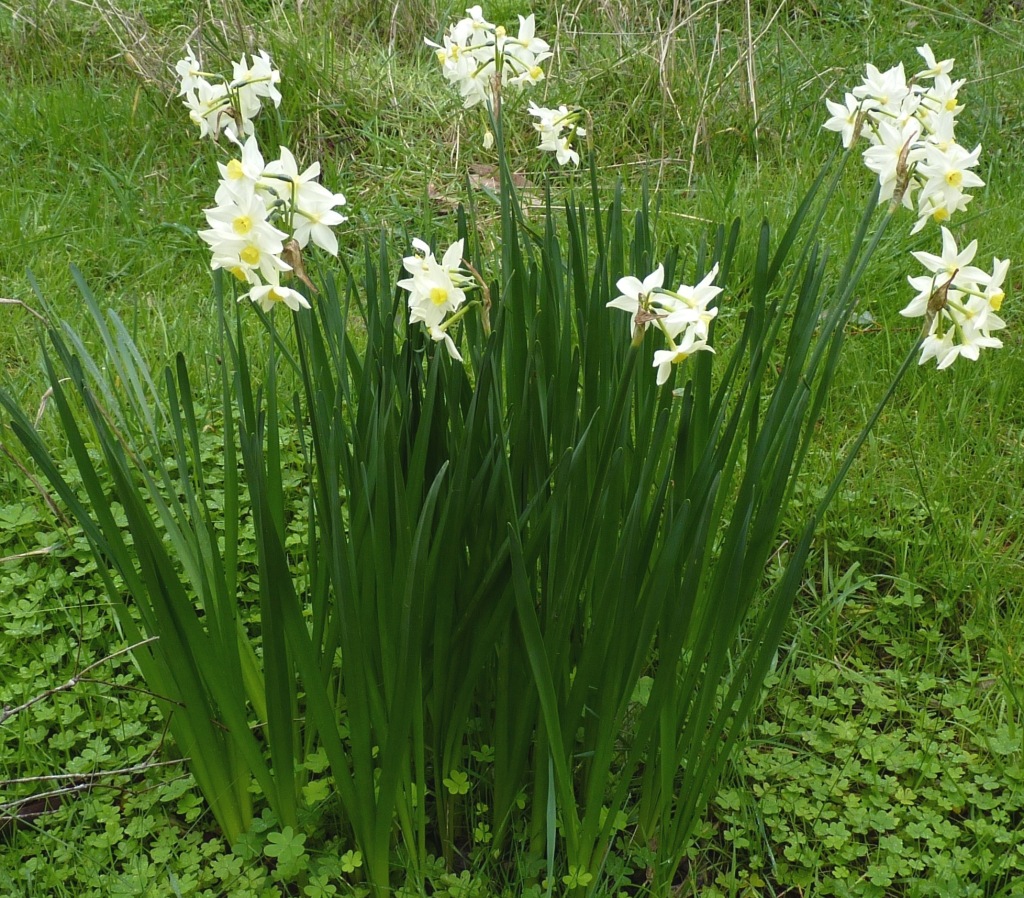Narcissus tazetta
L. TazettaBulb subglobose, 20–35 mm diam. Leaves several, linear, flat or channelled, 20–50 cm long, 5–25 mm wide, commonly somewhat glaucous. Scape erect, subequal to or exceeding leaves, biconvex. Umbel loose, with 4–10 fragrant flowers; pedicels unequal, 1–7 cm long, sharply bent immediately below ovary; perianth tube 1.5–2 cm long; lobes ovate, 1.5–2.5 cm long, widely spreading, white or yellow; corona cup-shaped, 3–6 mm long, yellow to orange, the rim variably crenate-undulate; upper series of stamens exceeding perianth tube, included within corona. Capsule ovoid, 1–2 cm long. Flowers winter–spring.
VVP, GipP, OtP, Gold, DunT, NIS, WPro, HSF, VAlp. Widely grown as a spring bulb in temperate countries, including southern Australia, and occasionally escaping from cultivation. Recorded as naturalised in Kiata in the far west, and the Melbourne suburb of Kew, but known to persist around old and abandoned gardens elsewhere.
A number of forms have been described, 3 subspecies are generally recognised based largely on flower colour. All 3 subspecies are naturalised in Victoria and often co-occur, see descriptions.
Conran, J.G. (1994). Liliaceae. In: Walsh, N.G.; Entwisle, T.J., Flora of Victoria Vol. 2, Ferns and Allied Plants, Conifers and Monocotyledons, pp. 637–686. Inkata Press, Melbourne.
 Spinning
Spinning




